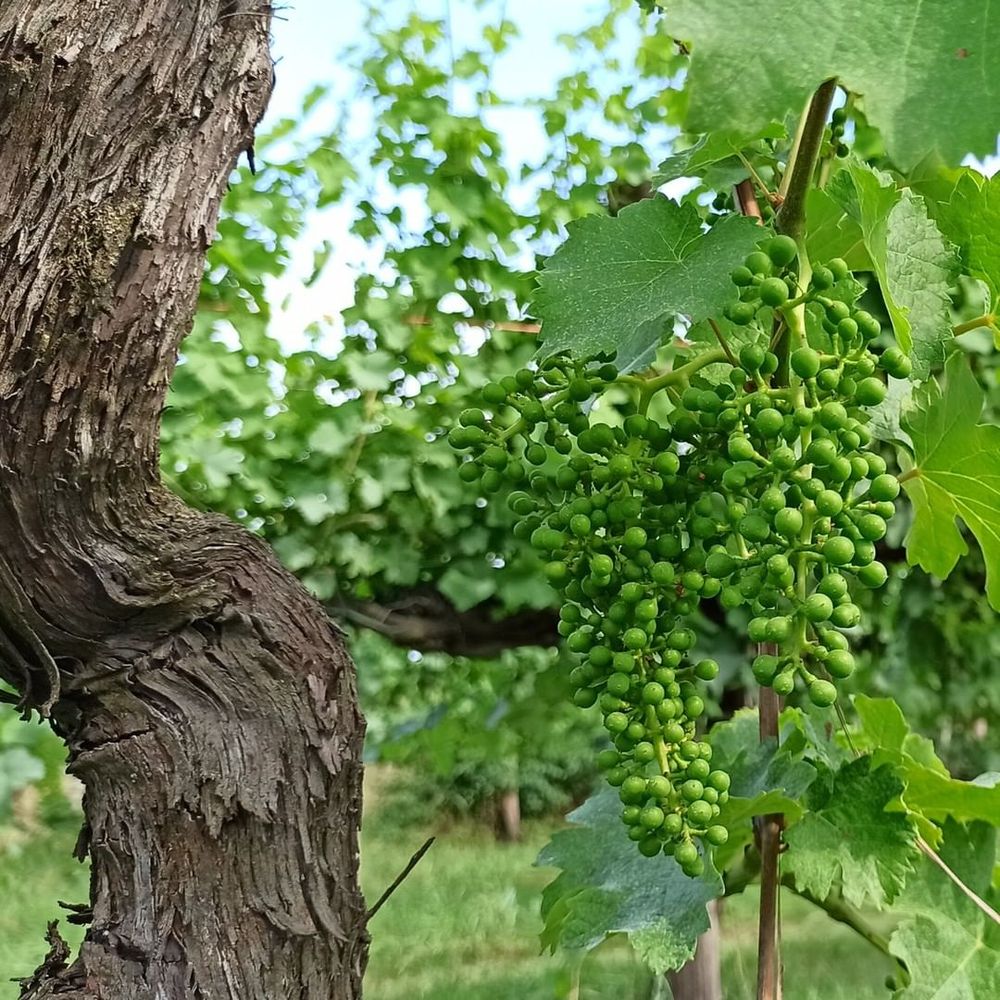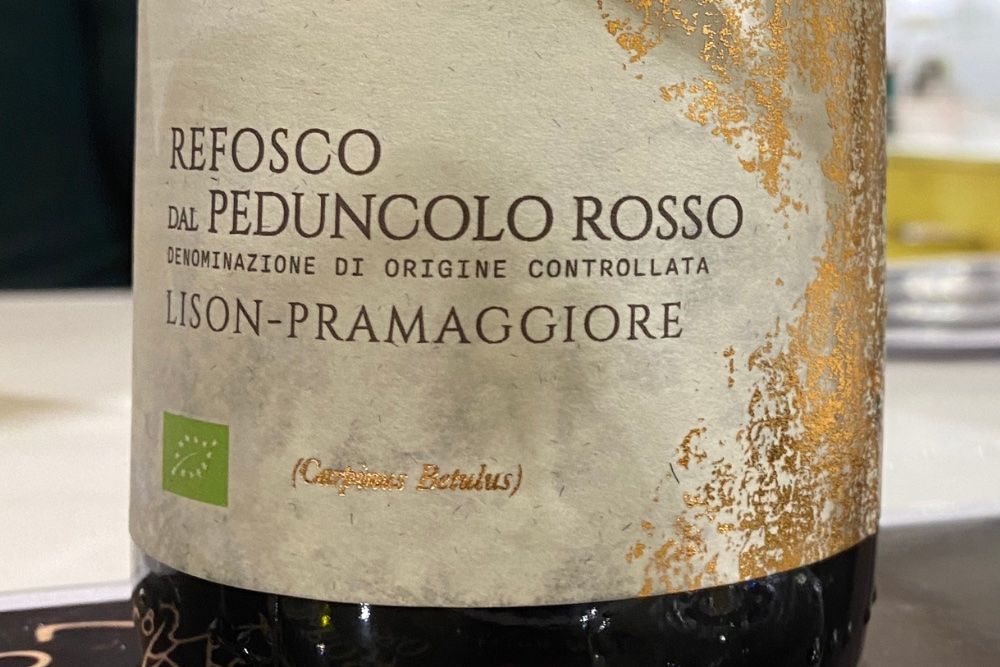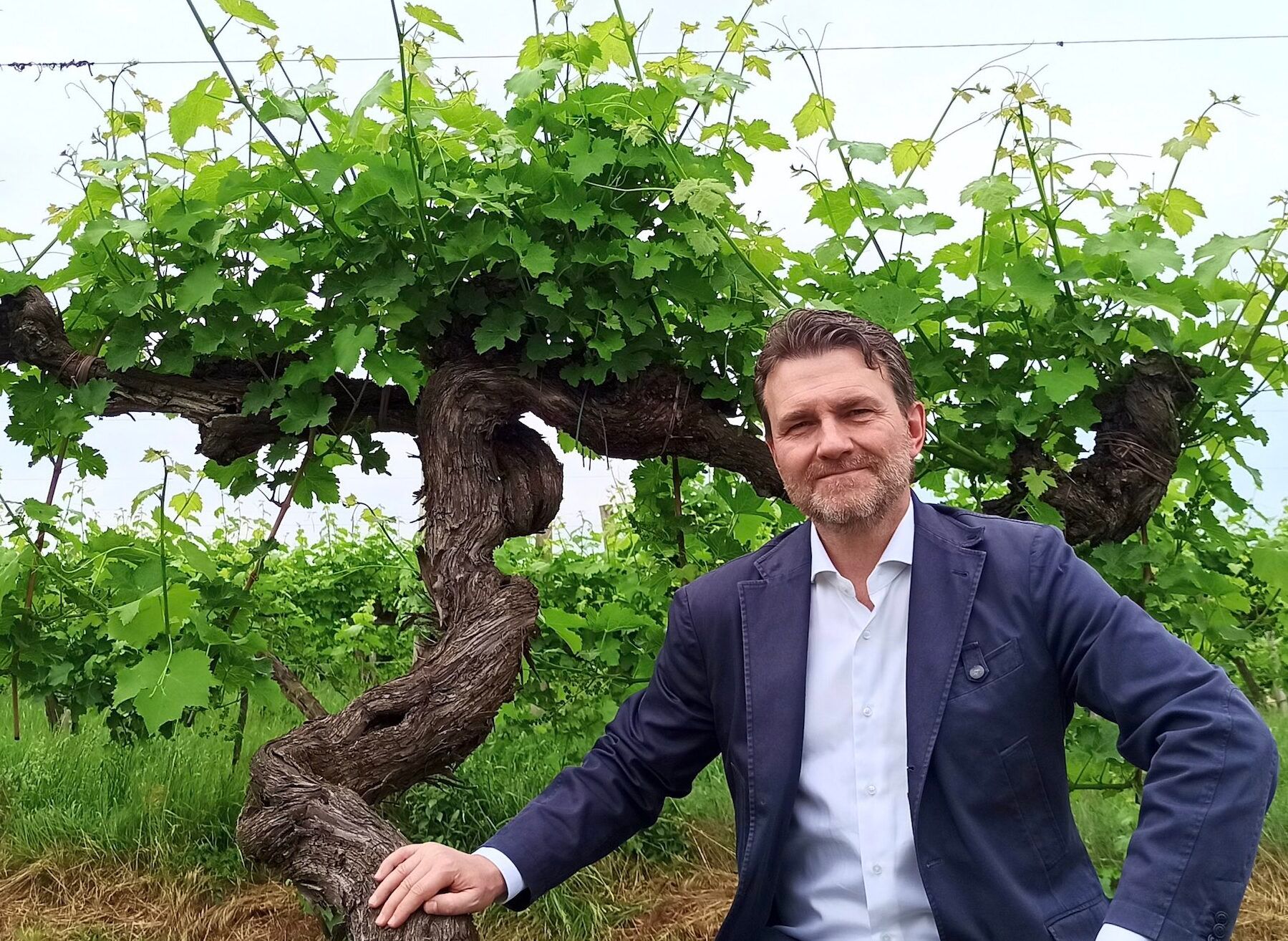“In a region where you can just plant Glera and receive a regular income stream from large producers for your fruit, it’s a bold choice to persist with high quality indigenous grapes,” writes Turner.
In April this year I attended my first ever VinItaly. Granted I’ve not done ProWein before, but VinItaly is staggeringly large compared to any other wine fairs I’d attended thus far. I soon regretted the meagre two days I had pencilled in the diary to get around, especially with a far from well prepared schedule of visits. Luckily my old friend Michele Marmino was on hand to point me in a few directions, and one in particular had me sat face to face with the impressive Domenico Veronese of the certified organic Villa Bogdano 1880 in Friuli.

Villa Bogdano 1880 estate
Who are Villa Bogdano 1880?
Domenico Veronese and estate manager, Lucio Tessari have been at the helm of Villa Bogdano 1880 since 2016. As Veronese remembers “it was Christmas Eve 2015, and my brother-in-law was speaking to me about a beautiful estate up for sale. The prospective new owners wanted to gut the old vines and the forests and mass plant Glera for Prosecco. I proposed that we try instead.”
The single plot estate contains 106 hectares of vineyards, where vines grow in a clay-covered alluvial and calcareous soil, preferring low yield production, and with priority placed on protecting the 10 hectares of native forest, 18 hectares of old-vines. “Older vines have better roots of course, but more than anything it means you don’t have lazy vines,” stated Veronese. “They are naturally limited to at most around 50-60 hl/ha without much work from our vineyard team.”
They also have a desire to enhance the reputation of indigenous varieties, such as Tocai Friulano and Refosco dal Peduncolo Rosso. In a region where you can just plant Glera and receive a regular income stream from large producers for your fruit, it’s a bold choice to persist with high quality indigenous grapes. “We have to be very sure about our target market,” continued Veronese. “In some markets, such as Switzerland and even France, it’s the indigenous varieties that get you in. They really are a must.”

Fruit set of the late 19th-early/ 20th century Tocai Friulano trained into Cassone Padovano
Sponsoring the Old Vine Conference
Veronese is very proud of the estate’s old vines, so much so that this year they’ve become one of the major sponsors of the Old Vine Conference.
I’m sure we’re all now very aware of the Old Vine Conference, a UK non-profit company for the support of historic vineyards founded by Masters of Wine, Sarah Abbott and Alun Griffiths, together with prominent personalities in the wine world. Established to promote such vineyards, they are creating a connection between the producers, scholars, experts, wine producers and wine lovers. The goal is to give global recognition, and potentially even firm definitions, to heritage vineyards as a new commercial category.
“We are honoured to become part of this prestigious organisation, to make our contribution to the recovery of heritage vineyards and promote the wines that they produce,” commented Veronese when announcing his participation this June. “We are convinced of the asset that taking care of heritage vineyards is becoming, both in terms of the extraordinary quality of the wines they can produce and the positive impact that their care contributes to protecting biodiversity.”
Tasting Through The Wines
I was lucky enough to taste though a selection of wines in the company of Veronese in the Bio tent at VinItaly. Veronese is a talker, and so am I, and they were closing up the tent around us as we tasted through, but I still managed to take some decent notes and picked out a few favourites from their selection.

Prosecco Brut Nature Millesimato, 2021
After all that talk about indigenous varieties, they’re not fools. They know Glera has value in this region and have around 15 hectares planted. They keep only about 0.5 hectares, however, for their own sparkling wine portfolio. The rest they sell to large producers. “The money that brings in provides a buffer for the rest of their production,” beams Veronese.
The Brut Nature was the stand out of the three for me. With around 19-20g of dry extract they feel confident they can get away with no residual sugar, and it shows!
The nose was very floral with beautiful jasmine hits, as well as fruity with peach and ripe nectarine. The fresh, salty, mineral mouthfeel that you get from well made Prosecco was joined by lemon pith bitterness in the mid-palate, leaving a balanced structure and a long finish. I fancy this to be a very good foodie wine, perfect with a plate of fritto misto seafood.
Lison Classico 2019 & 2020
The Lison Classico is made from 100% old vine (around 80 years old) Tocai Friulano. The vineyard itself is planted to the traditional ‘Cassone Padovano’. Many years ago in this region it was typical to have more trees, with rows at either side of the vineyard to help with both drainage and water storage, a technique known as ‘Cassone Padovano’.
The 2019 was the wine that made an appearance at this year’s Old Vine Masterclass at the London Wine Fair. The 2019 had naturally lower yields due to the climate, less than 40hl/ha. It was already very developed with honeyed tropical notes, and a long mineral, almond finish, but with plenty of freshness from the acidity running through.
The 2020 was distinctly creamy from eight months of lees ageing, with a luxury mouthfeel, and notes of lemon curd, ripe greengages, tangerine, stone and tropical fruit, and a really enjoyable herbal kick from sage. Again, there was plenty of minerality and nuttiness to the long finish.

Pinot Grigio Ramato, 2020
A Pinot Grigio made in the historic Ramato style of skin-macerated Pinot Grigio. The grape itself is famously not actually white, but more grey and occasionally pink in colour. The hue that it leaves the wine gives rise to the name, as the word ‘rame’ which means ‘copper’ in Italian. This was, until the 1960s, the most commonly made style of Pinot Grigio in the Friuli region.
This is a very aromatic style of Pinot Grigio with red apples, pear skin, wild strawberries, orange blossom, honeydew melon, and a nice spicy heat on the finish. This would be a perfect pairing with Thai food and, as Veronese suggests, “it’s a wine made for people who want better Pinot Grigio, without the funky bits!”

186 Refosco Dal Peduncolo Rosso Riserva
In a nod to the history of this old estate, the numbers on the labels of the Selection range denote the map reference of the vineyards from over 400 years ago. 186 is home to the 30-year-old vines of Refosco Dal Peduncolo Rosso.
After fermentation, the wine has spent 12 months in concrete, before 18 months in large French oak, before finally being allowed to rest for three months in bottle before release.
It leaves a very ripe, red fruit nose, with hints of game, mocha, and a lifting sweet spice. But the real beauty of this wine was definitely when you took a sip. Really intense and crunchy raspberries and cranberries, red apple, and a fresh greenness that you don’t really see all that much in these days of warming climates. Perfect with a mint lamb burger. I also really enjoyed the tannic grip that is helped along by the predominantly clay make-up of the soils in the 186 plot.
195 Merlot Selection
Merlot gets a terrible reputation as a bit of a nothing variety in many areas of the world, and especially in areas like the wider Veneto just to the South, where most of it is subject to high-yielding production to hit a price point. That’s life, that’s business, it is what it is. This Merlot, however, was the kind of wine that makes you sit up and take note.
Made with fruit from 60+ year-old Merlot vines (and a dash of Cabernet Sauvignon), it has the same 12 months in concrete, 18 months in large French oak and three months in bottle that the Refosco has. But this is a much more unctuous set of flavours in the final wine, with brooding black fruits of bramble and plum and sweet cinnamon spice on the nose. The ripe and grippy tannin on the palate giving structure that indicates this is a wine that could enjoy a bit of bottle ageing if your tastes are bent towards some tertiary notes.
For more information about Villa Bogdano 1880 please visit their website or contact Michele Marmino of Zedd Comm
The wines of Villa Bogdano 1880 are currently imported into the UK by Ultravino
Mike Turner is a freelance writer, presenter, and educator and regular contributor for The Buyer. He also runs a wine events business, Feel Good Grapes, that explores and discusses the idea of sustainability in the wine trade.










































